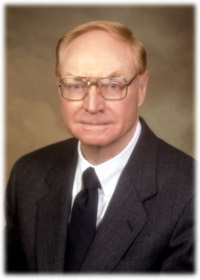Heyser Memorial Lecture
AES 120th Convention
Paris Expo - Paris, France
Sunday, May 21, 2006 - 18:45-20:15
Spatially-Selective Sound Capture
by Jim Flanagan
Biography
 James Flanagan has enjoyed two careers – in industry, and in academia. After 33 years with AT&T Bell Laboratories, Flanagan joined Rutgers University in 1990. At AT&T Flanagan was Director of Information Principles Research and had responsibilities for departments conducting research in digital communications, signal processing, robotics, linguistics, acoustics, and networked information systems. At Rutgers, Flanagan served dual roles as Vice President for Research and as Director of the Center for Advanced Information Processing (CAIP). In 2005 he retired as Board of Governors Professor Emeritus.
James Flanagan has enjoyed two careers – in industry, and in academia. After 33 years with AT&T Bell Laboratories, Flanagan joined Rutgers University in 1990. At AT&T Flanagan was Director of Information Principles Research and had responsibilities for departments conducting research in digital communications, signal processing, robotics, linguistics, acoustics, and networked information systems. At Rutgers, Flanagan served dual roles as Vice President for Research and as Director of the Center for Advanced Information Processing (CAIP). In 2005 he retired as Board of Governors Professor Emeritus.
Flanagan’s educational preparation includes the BSEE from Mississippi State University, which he returned to complete after service in the U.S. Army 1944-46, and the SM and ScD degrees in Electrical Engineering from M.I.T.
Flanagan's personal research has centered in voice communications, computer techniques and electro-acoustic systems. He has contributed to signal coding algorithms for telecommunications and voice-mail systems, and to evolving techniques for automatic speech synthesis and recognition. He originated auto-directive microphone arrays for teleconferencing, and pioneered the use of digital computers for acoustic signal processing.
Flanagan has published approximately 200 technical papers in scientific journals. He is author of the research text Speech Analysis, Synthesis and Perception (Springer Verlag), which has appeared in five printings and two editions, and has been translated into Russian. He holds over 50 U.S. patents in his specialty fields.
Flanagan has received scientific awards which include the U.S. National Medal of Science 1996 and the IEEE Medal of Honor 2005. He has been elected to the National Academy of Engineering, and to the National Academy of Sciences. He has been awarded Doctor Honoris Causa from the University of Paris-Sud and from the Polytechnic University of Madrid.
Abstract: Spatially-Selective Sound Capture
As high-speed communication becomes globally pervasive, activities such as corporate conferencing and Internet learning proliferate. Increasingly of interest is good-quality sound capture for meeting rooms, auditoria, and lecture halls. Speech interaction between remote groups, and lectures from multiple moving talkers, render tethered and encumbering body-worn or hand-held transducers inappropriate. Sound capture at a distance, with spatial resolution sufficient to separate competing sources (and perhaps provide perceptual advantages similar to those of human binaural localization and lateralization) is a central interest. This lecture reviews some of the issues in sound capture under degradations imposed by reverberation and noise interference. Major points include: location of sound sources; identification of signal character (speech, music, noise); and, selective capture of desired sources. Earlier work on auto-directive delay-sum beamforming for large arrays (400 electret microphones) and later experiments with time-reversal matched filtering are mentioned. Audio and video recordings illustrate results.
The presentation will be followed by a reception hosted by the AES Technical Council.
